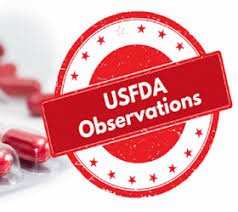FDA 483 Observations Related to Cleaning in Pharmaceuticals

🧾 Common FDA 483 Observations Related to Cleaning in Pharmaceuticals
1. Inadequate Cleaning Validation
-
Cleaning validation not performed for all product-contact equipment.
-
Worst-case product selection (hardest to clean, most toxic/potent, least soluble) not justified.
-
Failure to establish residue limits (MACO/acceptance criteria) based on toxicological evaluation.
2. Improper Cleaning Procedures (SOPs)
-
SOPs for cleaning not detailed (e.g., missing parameters like detergent concentration, contact time, water temperature).
-
Lack of step-by-step instructions for dismantling, cleaning, and reassembly of equipment.
-
Failure to define visual inspection acceptance criteria.
3. Inadequate Documentation
-
Cleaning records/logbooks not properly maintained or incomplete.
-
Operators did not sign/record cleaning activities at the time of performance (data integrity concern).
-
Missing traceability of cleaning between batches/products.
4. Ineffective Cleaning Verification
-
Swab/rinse sampling not scientifically justified (locations not worst-case).
-
Analytical methods for detecting residues not validated or not sensitive enough.
-
Cleaning verification not performed after every product changeover in shared equipment.
5. Cross-Contamination Risks
-
Residues from previous product, detergent, or microbiological contamination found in equipment.
-
Dedicated equipment not provided for high-risk materials (penicillins, cephalosporins, hormones, cytotoxics).
-
Inadequate line clearance before starting new batch.
6. Inadequate Control of Cleaning Agents
-
Cleaning detergents not qualified (residues, toxicity, effectiveness).
-
Lack of assessment of detergent residue impact on product safety.
-
No expiry or requalification studies for cleaning solutions.
7. Poor Equipment & Facility Design
-
Hard-to-clean equipment design not addressed in cleaning validation.
-
Dead legs, poor drainage, and uncleanable surfaces in facilities.
-
Inadequate cleaning practices in non-product-contact utilities (e.g., water system biofilm).
8. Microbial Control Failures
-
Inadequate cleaning and sanitization in aseptic/sterile areas.
-
No monitoring of cleaning effectiveness for bioburden and endotoxins.
-
Cleaning frequency not adequate to prevent microbial proliferation.
📌 Examples of Real FDA 483 Wording (paraphrased)
-
“Failure to validate the adequacy of cleaning procedures for non-dedicated equipment used in the manufacture of multiple drug products.”
-
“Residues from previous products were detected on equipment purported to be clean.”
-
“Cleaning records are incomplete and do not document all cleaning operations performed.”
-
“The analytical methods used to verify cleaning effectiveness are not validated for sensitivity and specificity.”
✅ Key Takeaways for Compliance
-
Perform robust cleaning validation with scientific rationale.
-
Maintain detailed SOPs and contemporaneous records.
-
Use validated analytical methods for residue detection.
-
Design equipment/facilities to be easily cleanable.
-
Ensure risk-based approach for cross-contamination prevention.
🎓 Discover one of the best Complete Pharmaceutical Quality Assurance Course available —click below to explore the course that’s shaping future in QA Course skills.

